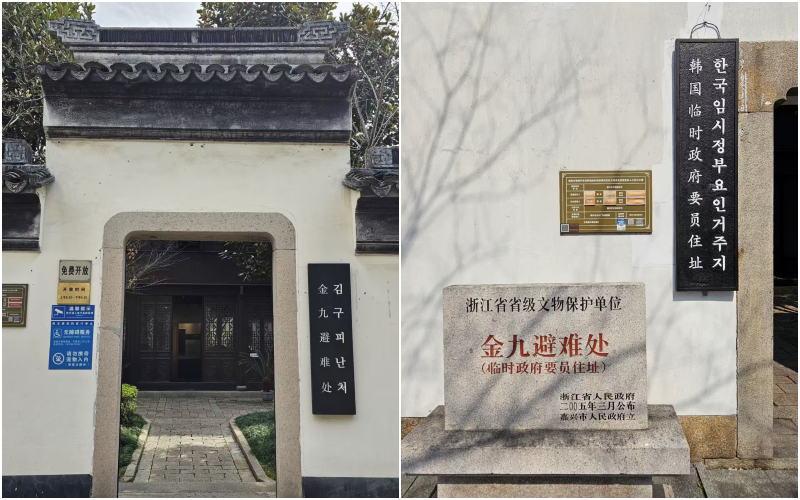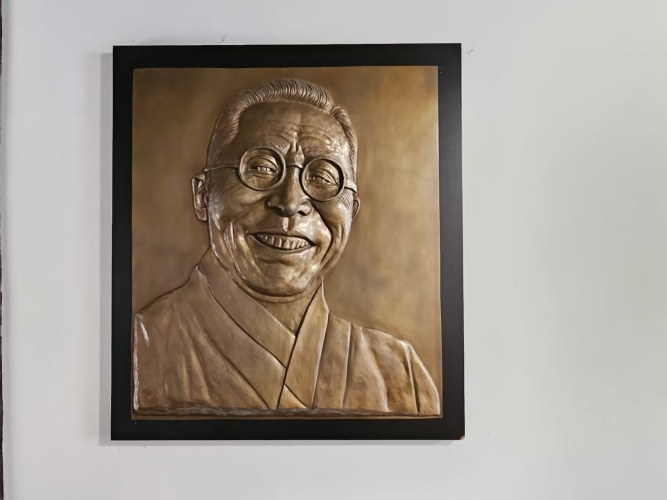- 한국어
- English
- 日本語
- 中文
- العربية
- Español
- Français
- Deutsch
- Pусский
- Tiếng Việt
- Indonesian
By Honorary Reporter Sun Jianping from China
Photos = Sun Jianping
On March 2, the day after March First Independence Movement Day, I went to the city of Jiaxing in the Chinese province of Zhejiang to visit the former hiding place of Korean patriotic martyr Kim Gu (Koo).

On the left is the main gate of the former refuge of Kim Gu (Koo) in Jiaxing, located in the Chinese province of Zhejiang, and on the right is the residence of the members of the Korean Provisional Government in the same city.
The landmark honors Kim, a revered leader of the Korean independence movement and president of the Korean Provisional Government who fled to China in 1919. To evade Japanese authorities, he hid in Jiaxing for two years with the help of Chinese activist Chu Fucheng and others.
My first stop was a residence on 76 Meiwan Street that once belonged to Kim ally Chen Tongsheng. Built during the late Qing Dynasty, this two-story brick and wooden structure has two rooms and three floors and is located by a lake. In May 1932, Chu arranged for Kim to stay at a cozy south-facing building, offering respite during tumultuous times.

Kim Gu (Koo) relief sculpture donated by actor Song Hye-kyo
The visit took an emotional turn after I arrived at the relief sculpture of Kim donated by Korean actor Song Hye-kyo. Then came 17 Rihuqiao, where members of the KPG and their families stayed and became a hub for the independence movement.
The refuge honoring Kim is a powerful symbol of Korea's fight for independence and the remarkable friendship between Kim and Chu. Their story is a testament to courage and solidarity in the face of adversity.
msjeon22@korea.kr
*This article is written by a Korea.net Honorary Reporter. Our group of Honorary Reporters are from all around the world, and they share with Korea.net their love and passion for all things Korean.